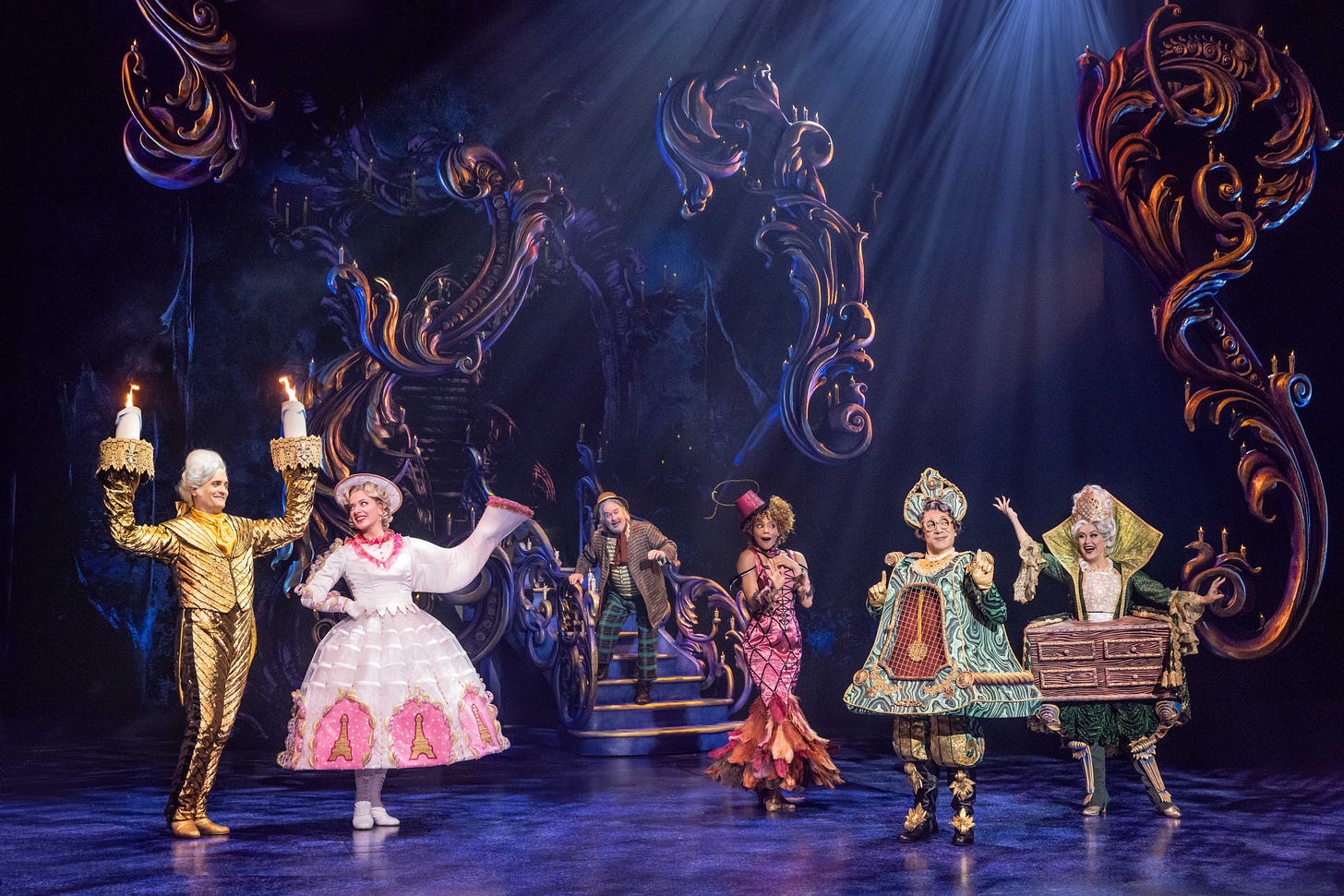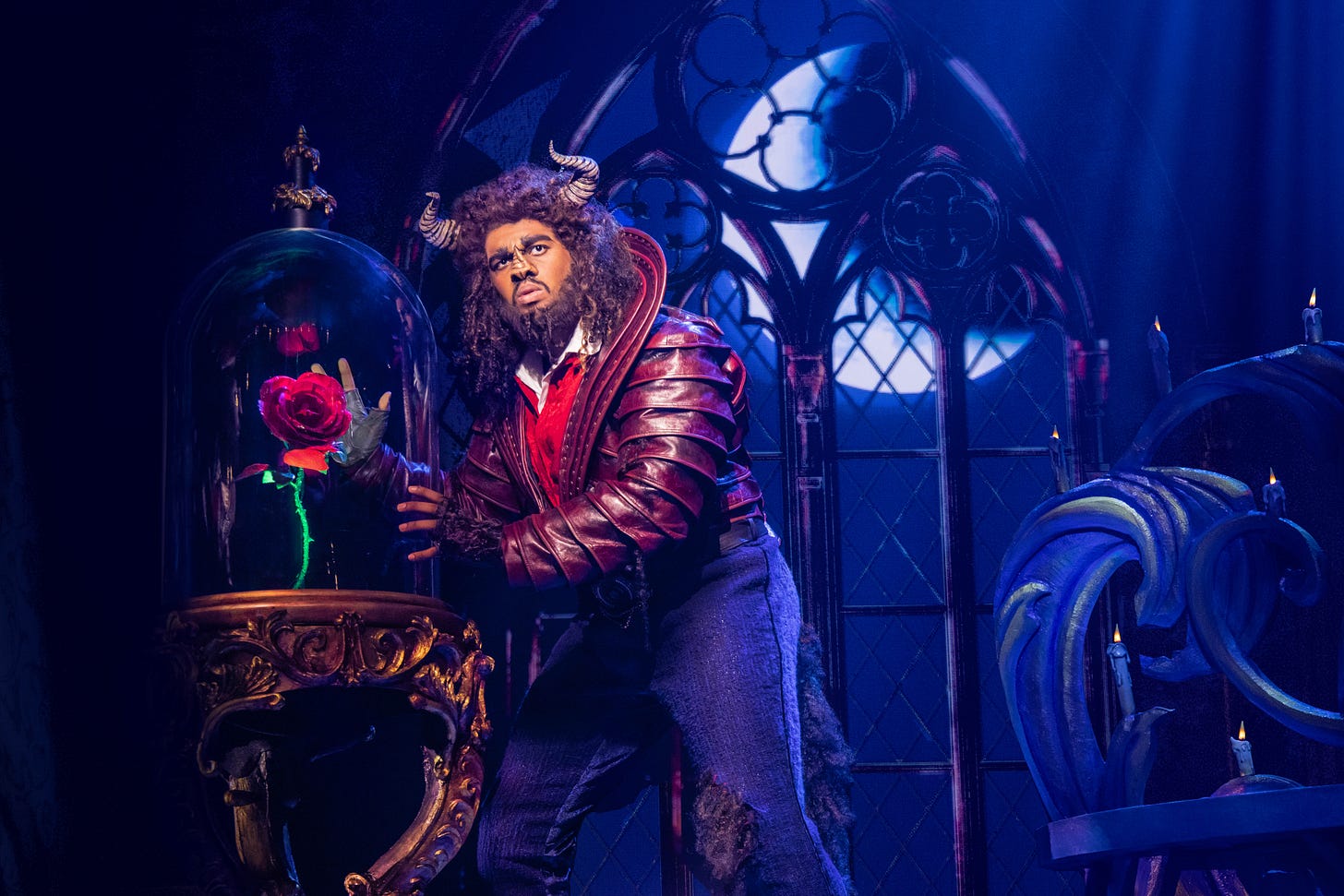In "Beauty and the Beast," a timeless classic dazzles modern audiences

“Beauty and the Beast” may have a tale as old as time at its core, but the first national tour of Disney’s stage adaptation in more than two decades proves the timeless classic can still dazzle modern audiences.
At the heart of the show’s success are the incredible performances of the ensemble cast, anchored by Kyra Belle Johnson as Belle (yes, that’s really her middle name) and Fergie Philippe as the Beast.
Philippe delivers a nuanced performance capturing the Beast’s full range of short-tempered outbursts fueled by repressed resentment to boyish wonder as he discovers the power of books and begins to feel the joy of human connection after years of closing himself off from the world.
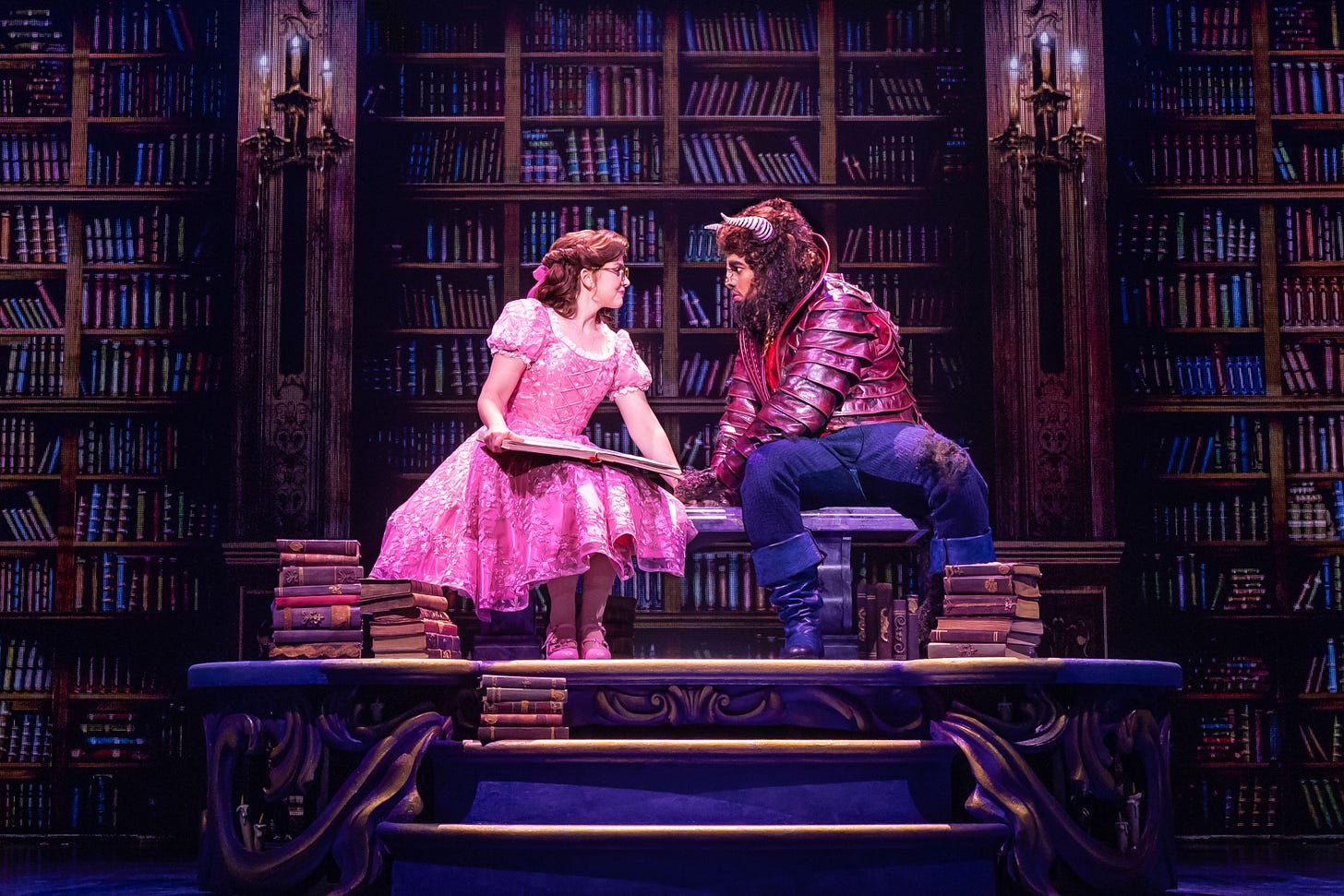
Johnson leans into Belle’s strong-willed nature, which allows Stephen Mark Lukas as Gaston and Harry Francis as Lefou to shine as the show’s shallow villains.
In the book by Linda Woolverton, Belle is not a damsel in distress, but a curious young woman forging her own path and searching for something deeper, despite Gaston’s astonishment that anyone could have a dream bigger than being his wife.
Gaston’s befuddlement leads to one of the show’s more memorable numbers, with the ensemble using their beer mugs as instruments while singing about his imposing physique.
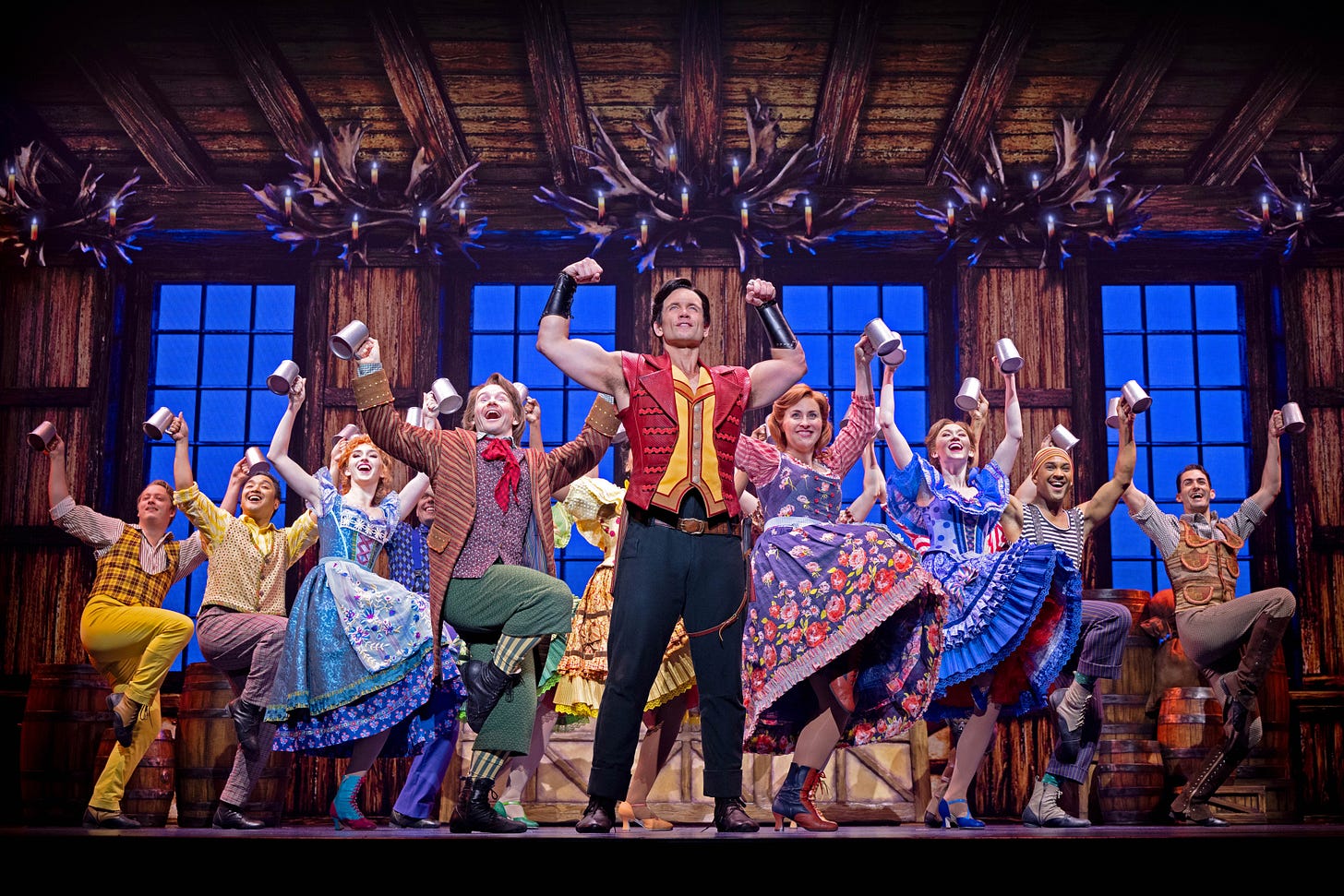
The castle’s servants all embody their roles perfectly, though Danny Gardner as Lumiere and Kathy Voytko as Mrs. Potts are two of the show’s standouts.
That’s thanks in part to creative costumes, designed by Ann Hould-Ward, who won a Tony Award for designing the original Broadway production’s costumes.
Lumiere’s hands are candlesticks that ignite with real flames, and steam pours out of the spout Mrs. Potts has for an arm.
But perhaps no costumes were more breathtaking than the ballroom attire worn by Belle and the Beast. Both Belle’s yellow ball gown and Beast’s navy-blue tailcoat shimmered with more specks of light than stars in the night sky.
Several audience members wore outfits resembling Belle’s iconic dress, a testament to the nostalgic space this story already holds for many families.
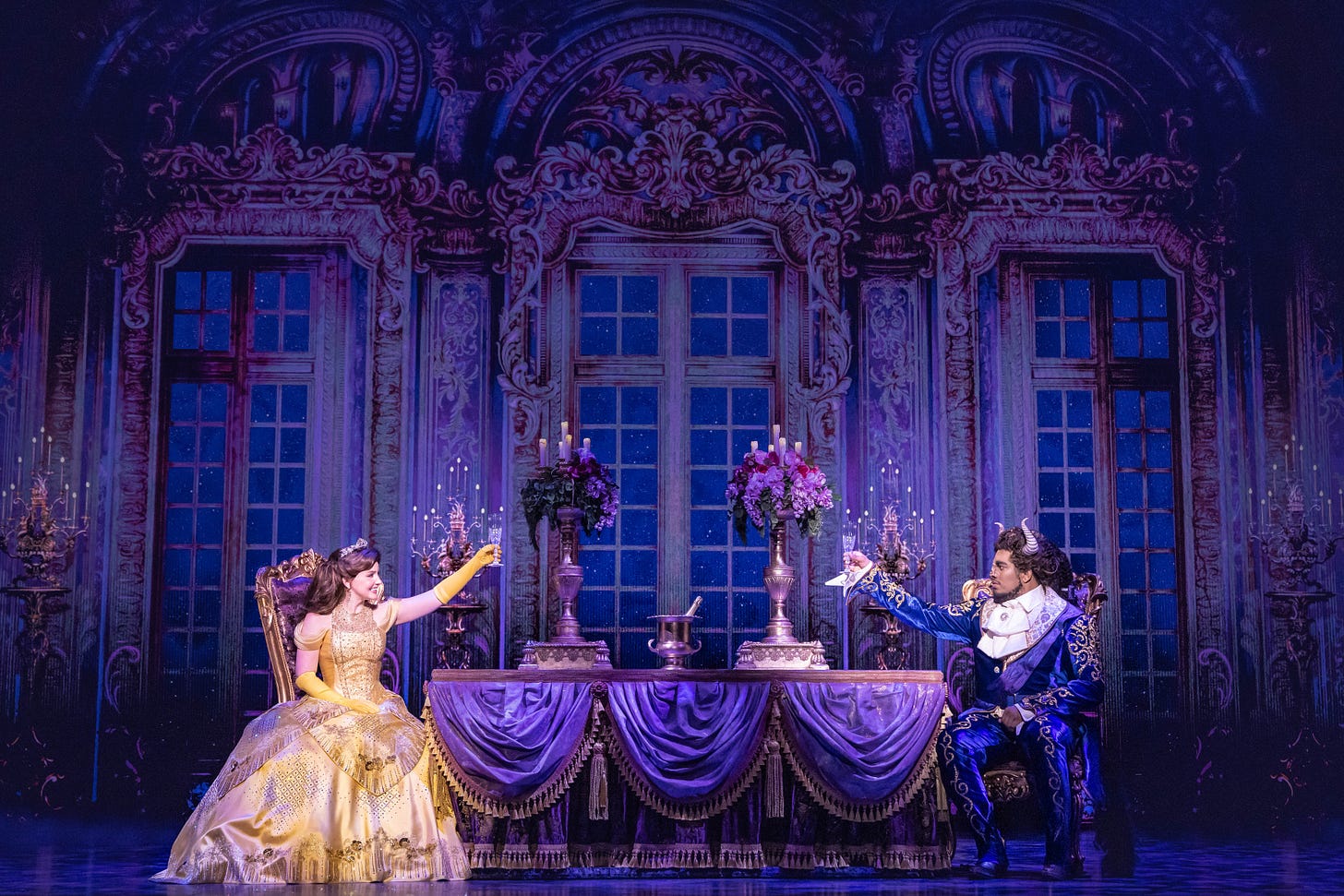
Luckily, this production is chock-full of Disney magic from the moment the lights go down, ensuring this version will fill new and familiar audiences alike with wonder.
The show opens with the Enchantress transforming from a feeble old lady into a towering figure and the prince transforming into his Beast form, all without ever leaving the audience’s sight, as original animated film cast member Angela Lansbury reads a narration warning that looks can be deceiving.
That’s just one example of the elaborate illusions designed by Jim Steinmeyer, who has previously worked with stage magicians like David Copperfield and Siegfried and Roy.
That background is clear when Mrs. Potts’ child, a young teacup named Chip who appears as a disembodied head, rolls around the stage in a teacart with a seemingly transparent bottom.
But the Beast’s transformation back into human form may have proven just a bit too difficult to convincingly disguise with a quick change visible to audiences.
While the transformation starts off impressive – with the Beast levitating and spinning in the air as projections on a scrim curtain surround him with flashes of colorful light – it ends by flashing bright LED lights aimed at the audience before cutting all lights for a few seconds, allowing him to remove the costume while the audience has been briefly blinded.
The scrim curtain is used tastefully throughout portions of the show, with projections designed by Darrel Maloney to simulate wolf attacks in the woods and lightning strikes on a stormy night.
But the set designed by Stanley Meyer relies a bit too heavily on backdrop videos created by Maloney that, at times, have an uncanny appearance resembling the cartoonish style of illustrations generated by artificial intelligence.
This is not an issue during scenes set in the castle, when the backdrops are primarily used for the night sky or dark interiors.
Yet even the scenes that are affected, set in the village, benefit from ingenious transitions in which the digital backdrops appear to “roll” on and off stage alongside the physical set pieces they are augmenting, exhibiting a level of attention to detail that Disney has come to be known for.
While some younger audience members grew restless during songs written for the stage by lyricists Howard Ashman and Tim Rice, the show’s major numbers are sure to delight with their elaborate choreography and extended orchestrations.
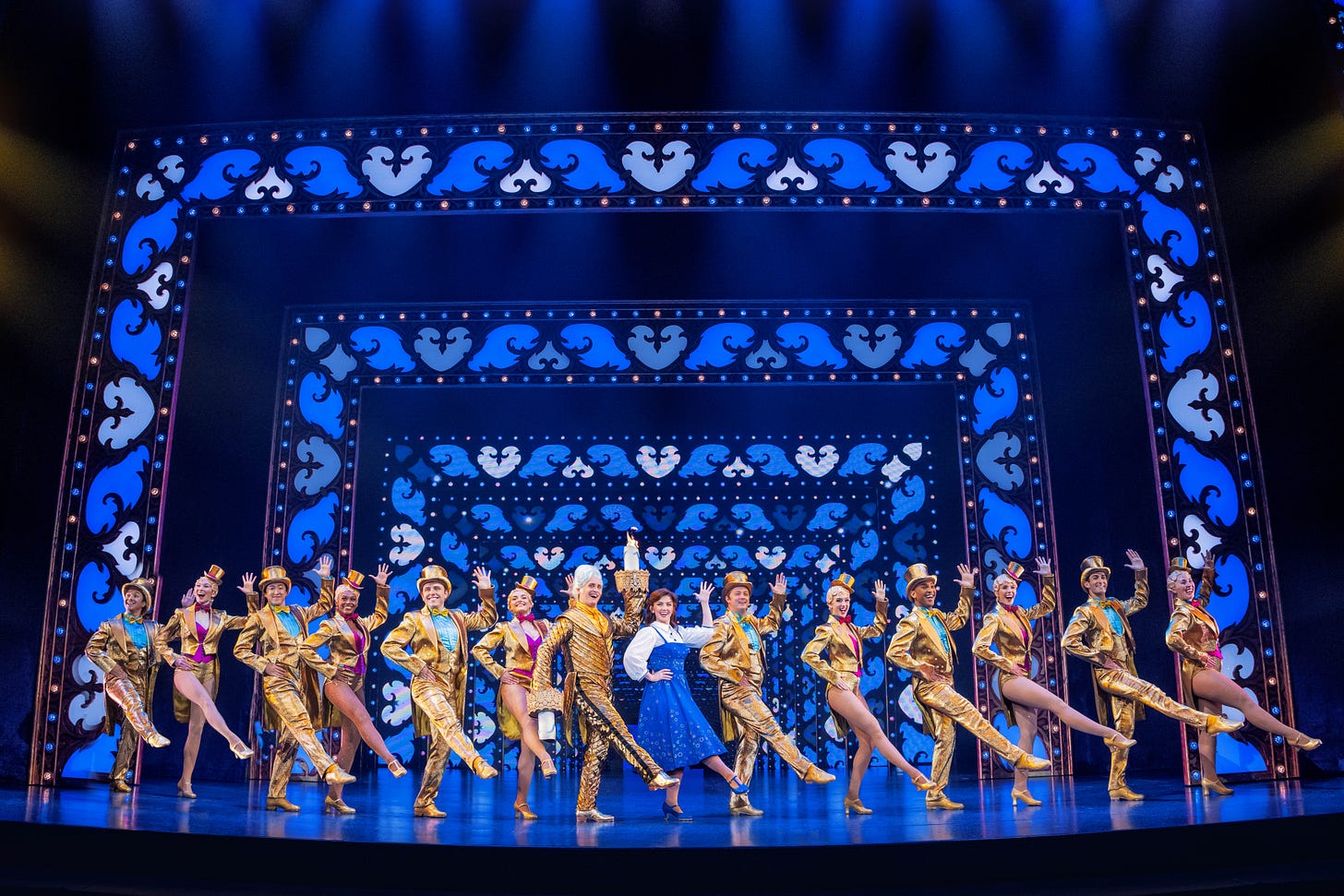
The showstopping performance of fan favorite “Be Our Guest,” complete with a tap dance routine and kaleidoscope choreography shot from above to highlight the synchronized leg movements of the dancers laying on the stage, sets a bar the rest of the show struggles to hit, earning thunderous applause and even getting a few audience members on their feet, though it’s not even the first act’s finale.
But Philippe’s beautiful performance of “If I Can’t Have Her” and Voytko’s touching performance of the show’s title track are so captivating that you remain momentarily immersed and almost forget about what became before.
Taken as a complete package, this production is guaranteed to make audiences fall in love with the show by the time the last enchanted rose petal falls.
Beauty and the Beast will play the Wharton Center in East Lansing through Oct. 19.


